Authors:
ABSTRACT
Aim
Aim of the present study was to evaluate the salivary clearance of Fluoride following administration of tablets and
chewing gums containing 0.50 mg of Fluoride in the form of NaF.
Methods
Ten children (age 10-13 years) and a
control group of 10 adults (age 22-27 years) were recruited and selected for the study. The experiment consisted of saliva samples
collection from each participant at fixed time intervals. Whole saliva was sampled from ten 10-13 years-old children to assess the
baseline fluoride concentration, then partecipants received one piece of chewing-gum and were asked to chew for 15 minutes. Whole
saliva samples were collected 5, 10, 20, 30, 45 and 60 minutes after the chewing period.The day after once again we admistered a
chewing-gum to each child, instructing them to continuously chew it for 15 minutes; subsequently we collected saliva samples at the
same intervals previously fixed. The following day the experiment was repeated, this time requesting the patient to chew as slow as
possible for 15 minutes and then news samples were collected. Saliva samples were collected at the same intervals previously fixed
from control group of 10 adults. After a week, children's group received one tablet and new saliva samples were collected at the same
intervals. The collected samples were analysed by a potentiometric method, assessing the Fluoride concentration by means of a
Fluoride ion-selective electrode.
Results
The clearance of Fluoride is similar for both the administration methods used.
Conclusion
Both chewing gum and tablets are valid methods of Fluoride administration and they can be considered useful aids in
dental caries prevention (when used in addition to adequate oral hygiene).
PLUMX METRICS
Publication date:
Keywords:
Issue:
Vol.8 – n.1/2007
Page:
Publisher:
Cite:
Harvard: M. R. Giuca, S. Saracino, E. Giannotti, A. Ceccarini (2007) "Oral clearance of NaF from chewing gum and tablets in children and adults", European Journal of Paediatric Dentistry, 8(1), pp19-24. doi:
Copyright (c) 2021 Ariesdue

This work is licensed under a Creative Commons Attribution-NonCommercial 4.0 International License.
